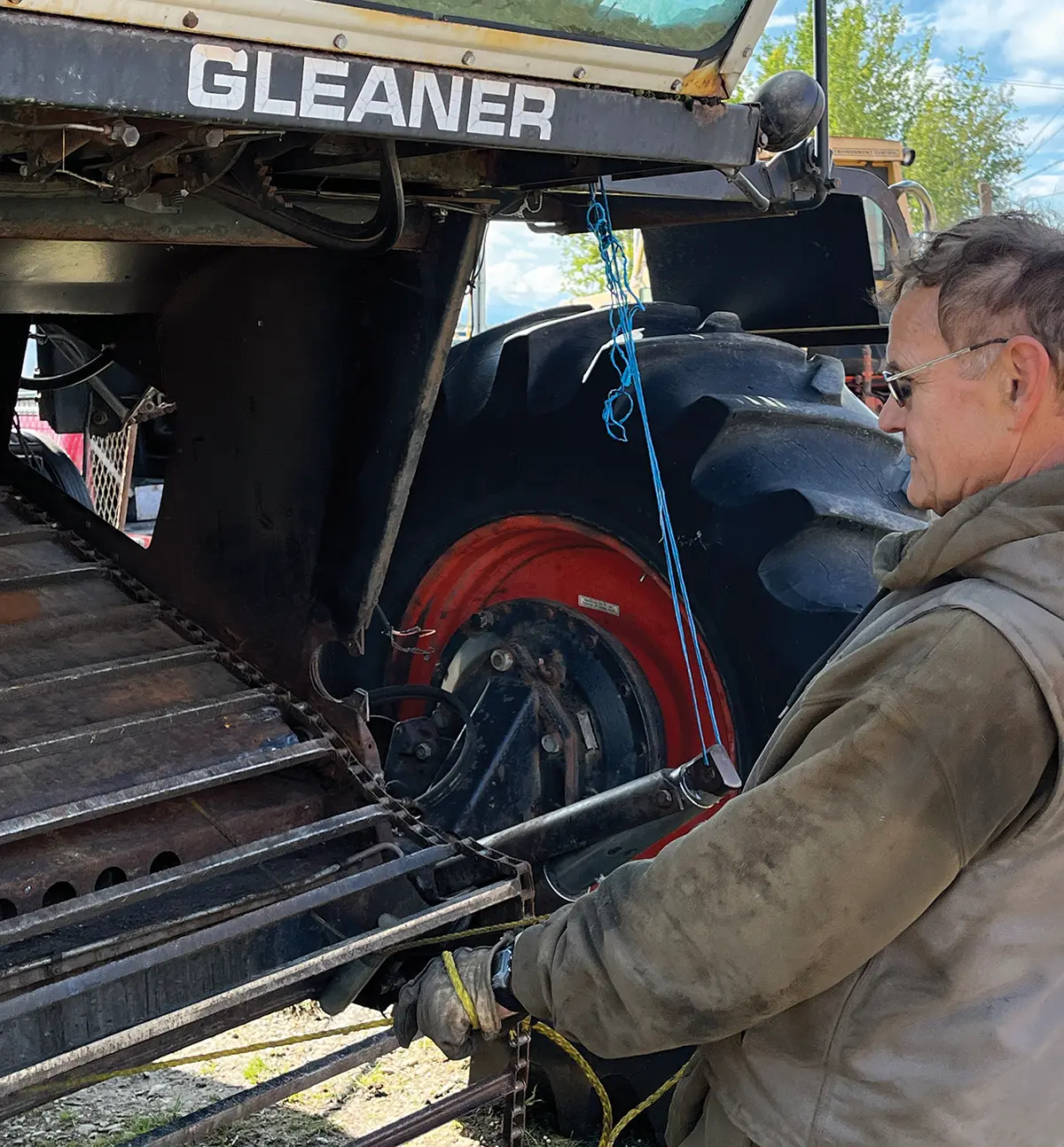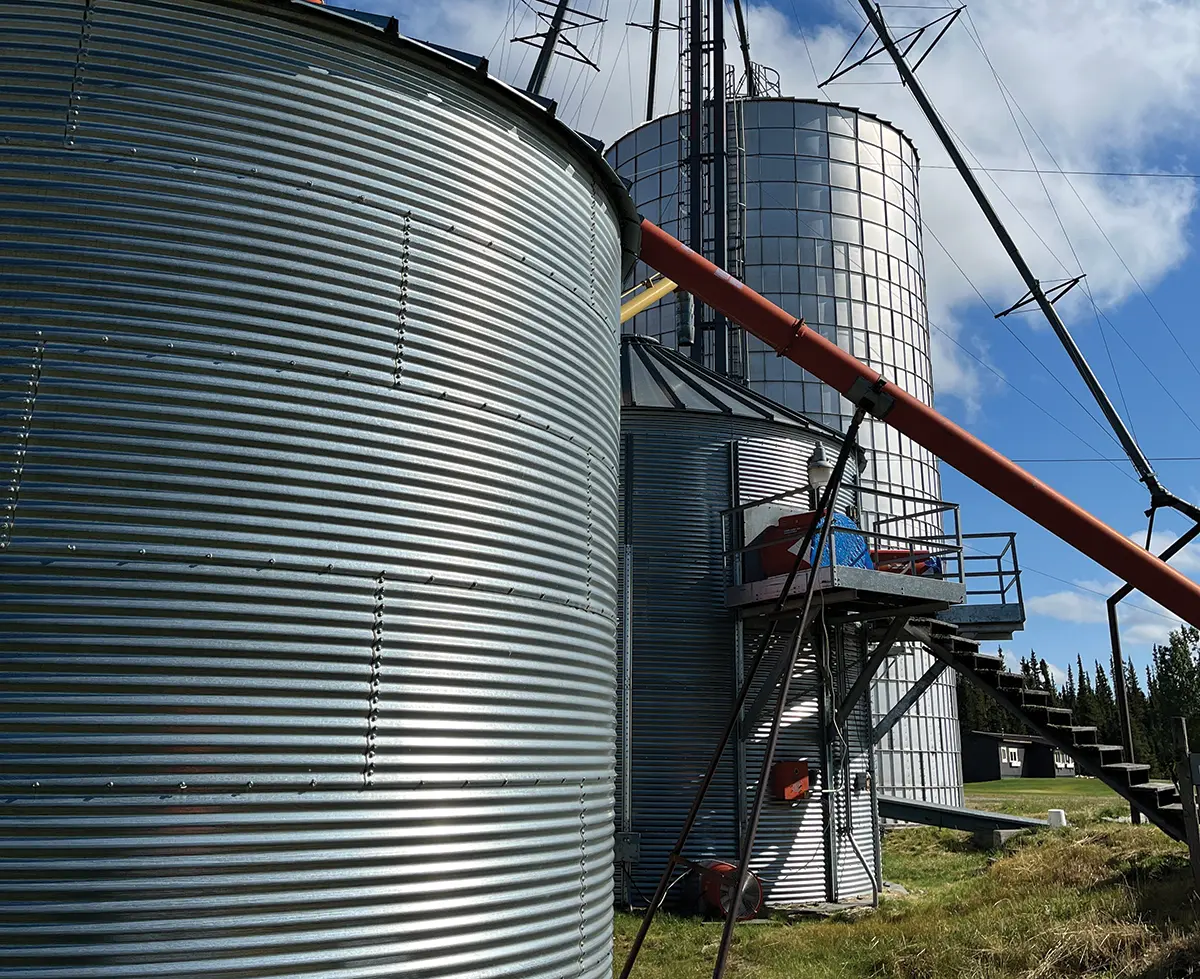Preserve Farms
long-awaited Alaska Feed Grain Reserve was established last year to purchase part of the state’s cereal crop and help stabilize food security.
Farmers have been raising grain in the Tanana Valley since the late ‘70s, when the State of Alaska allocated Interior farmland for barley production. “There’s not a lot of issue with being able to grow the barley,” explains Zach Knight, manager of the Alaska Farmers Cooperative in Delta Junction. The short season at 64° north latitude is not an insurmountable obstacle; approximately 5,000 acres of barley under cultivation benefit from clean water, clean soil, and fewer pests than in other climates.
About two-dozen members of the co-op pool their resources to buy in bulk, saving money on supplies like fertilizer. Midway through the September harvest, Knight says members were reporting a pretty good yield of about 1 ton per acre. Bushel weight, a key measurement of the nutrient value of each kernel, was mostly meeting the standard of 48 pounds, minus water. “We actually had some dried out to about 54 pounds per bushel, so really good bushel weight this year,” Knight adds.


The chain drive for the separator mechanism—a steel grate that drags the crop into the combine—was busted. Wrigley called one of the Delta Junction area’s few experienced farm mechanics for help taking off the header and feeder housing so they could realign the chain. Both men are past retirement age, but they continue doing the work that has sustained them all their lives.
Wrigley’s fields grow a variety called Sunshine barley that UAF researchers developed in 2009. His Alaska Flour Company runs the only commercial flour mill in Alaska. It processes the crop into barley-based packaged products—among the few foods for human consumption made from Alaska grain.


For a more long-term solution, the division handed Knight a check for $1 million last November so the co-op could launch the Feed Grain Reserve. Knight explains, “We’ll buy grain with that $1 million. Then we’ll have $1 million in inventory of small grain or cash in the bank. When we fill the reserve, it’ll sit there until we need it, and cash from sales when we dip into it will replenish it the next year.”
The reserve becomes a perpetual customer for barley farmers whose crop meets the quality standard for bushel weight. Knight also rattles samples in a pan to screen out noxious weeds. Substandard barley is turned into feed pellets and cannot be mingled in the storage bins.

“For the first time in Alaska agriculture history, there is actually a market for grain,” said Scott Mugrage, president of the Alaska Farm Bureau and a Delta Junction cattle rancher. “If you are a good farmer who isn’t good at marketing, this reserve will provide a venue for the co-op to purchase that grain, so it will open up new opportunities for some producers.”
The reserve will take several seasons to build up to the target of a full year’s crop, 1,500 tons in storage.

Removing one type of risk allows farmers to expand, putting more fields into production. More farms might experiment with hulless barley, enlarging the food sector that Alaska Flour Company has developed.
One of the newest additions to Wrigley’s mill is an onsite bakery to demonstrate the potential of barley biscuits and other goods. The warm, welcoming aroma of bread baked from grain harvested from under the midnight sun proves that Alaska farms can feed the state’s people.
They just needed a $1 million push.
